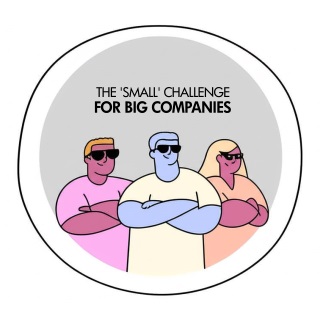 When Alan Mulally became Ford’s CEO in September 2006, the company was teetering on the edge of collapse. Ford had just posted a staggering $12.7 billion loss, was hemorrhaging market share to Japanese and Korean automakers, and was weighed down by outdated, inefficient products. Worse, the company was drowning in debt and facing a brutal liquidity crisis. Ford was desperate for a complete overhaul.
When Alan Mulally became Ford’s CEO in September 2006, the company was teetering on the edge of collapse. Ford had just posted a staggering $12.7 billion loss, was hemorrhaging market share to Japanese and Korean automakers, and was weighed down by outdated, inefficient products. Worse, the company was drowning in debt and facing a brutal liquidity crisis. Ford was desperate for a complete overhaul.
By the time Mulally stepped down in June 2014, Ford had staged a stunning turnaround. He unified global operations, streamlined brands, and standardized platforms across regions while refocusing on core markets. He slashed costs, restructured engineering, and poured heavy investment into fuel-efficient vehicles and cutting-edge technologies. Under his steady leadership, Ford weathered the 2008 financial crisis without a government bailout and returned to strong profitability. His tenure remains a powerful case study in corporate transformation.
One of Mulally’s most crucial changes was dismantling Ford’s toxic culture of internal rivalry and reckless short-termism. When he arrived, executives were shuffled through roles every two years, a system meant to create versatile leaders but one that completely backfired. Employees scrambled to make quick impressions rather than collaborate. Engineers routinely ignored predecessors’ work, even at the cost of losing smart, cost-saving innovations. The result was chaos—no continuity, no teamwork, no accountability.
![]() Mulally understood that leadership demanded stability. After joining Boeing as an engineer in 1969, he rose steadily through key technical and executive positions. He served as Senior Vice President of Airplane Development in 1994, President of Boeing Information, Space & Defense Systems in 1997, President of Boeing Commercial Airplanes in 1998, and finally CEO of Boeing Commercial Airplanes in 2001. Drawing from this deep experience, he extended leadership tenures at Ford, broke down fiefdoms, and fostered a culture of collaboration, discipline, and long-term strategic focus. His approach restored much-needed continuity and accountability, proving that constant job shuffling weakens leadership and that real impact takes time.
Mulally understood that leadership demanded stability. After joining Boeing as an engineer in 1969, he rose steadily through key technical and executive positions. He served as Senior Vice President of Airplane Development in 1994, President of Boeing Information, Space & Defense Systems in 1997, President of Boeing Commercial Airplanes in 1998, and finally CEO of Boeing Commercial Airplanes in 2001. Drawing from this deep experience, he extended leadership tenures at Ford, broke down fiefdoms, and fostered a culture of collaboration, discipline, and long-term strategic focus. His approach restored much-needed continuity and accountability, proving that constant job shuffling weakens leadership and that real impact takes time.
Idea for Impact: Exposing leaders to different departments builds broad perspective and prepares them for senior roles. However, they need enough time in each position to take ownership, build relationships, and drive real change. Rapid job rotations erode accountability and disrupt a deep sense of purpose.


 What struck me most in Penang is how Confucian values—often dismissed as rigid—are anything but. They
What struck me most in Penang is how Confucian values—often dismissed as rigid—are anything but. They 
.jpg)
 Yet, one can’t help but ask: Why hadn’t Munoz engaged with employees during his decade on the board of United’s parent company (and another five years at the acquiring company, Continental Airlines)? Wise board members often gain an
Yet, one can’t help but ask: Why hadn’t Munoz engaged with employees during his decade on the board of United’s parent company (and another five years at the acquiring company, Continental Airlines)? Wise board members often gain an 
 Got a brilliant idea? Share it freely and let others get in on the action.
Got a brilliant idea? Share it freely and let others get in on the action. Some HR folks encourage a
Some HR folks encourage a  Seventy years ago, American advertising executive
Seventy years ago, American advertising executive  When military leaders are prepared for a mission or operation, they’re furnished with key information and discussion topics in advance. This prebriefing ensures thorough familiarity with mission details, objectives, and potential challenges, ensuring they’re well-informed and able to effectively lead their teams during the operation.
When military leaders are prepared for a mission or operation, they’re furnished with key information and discussion topics in advance. This prebriefing ensures thorough familiarity with mission details, objectives, and potential challenges, ensuring they’re well-informed and able to effectively lead their teams during the operation.